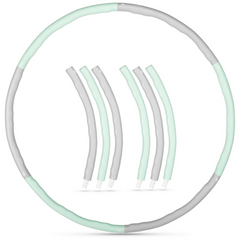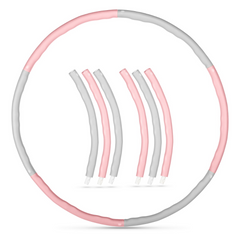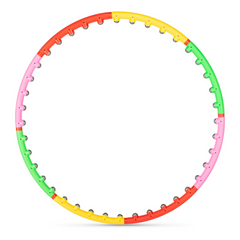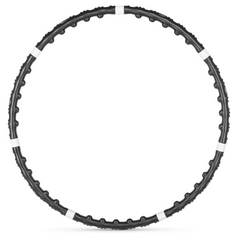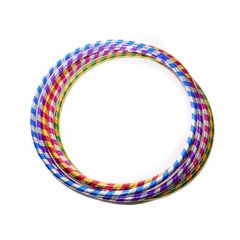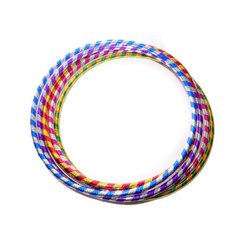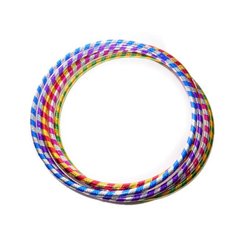|
Quantity
|
Out of stock
|
||
|
|
|||
Hula hoops, or hoops, are sports tools used for fitness, gymnastics, dance and general physical development. They are known for their simplicity and effectiveness for muscle training, coordination and endurance development.
Types of hula hoops:
1. Classic plastic hula hoops:
- The most common type used for dancing, gymnastics or just for fun. It is usually light and has different colors.
2. Massage hula hoops:
- These hoops have special balls or protrusions on the inside that provide an additional massaging effect during rotation. They are used to train the abdominal muscles, improve blood circulation and lose weight.
3. Weighted hula hoops:
- Heavier than ordinary hoops. Used for more intensive training. Increased weight contributes to better development of body muscles and endurance.
4. Complex hula hoops:
- These hoops can be folded, which makes them convenient for storage and transportation. They can be both with a massage effect and without it.
5. Gymnastic hoops:
- Used in artistic gymnastics. Light and often made of materials that allow them to quickly rotate around the body. Can be decorated with a colored ribbon or glitter.
How to choose a hula hoop:
1. Purpose of use:
- If you want to use a hoop for fitness and weight loss, it is better to choose a massaging or weighted hula hoop. A classical or gymnastic hoop is suitable for dancing or gymnastics.
2. Weight:
- Weighted hoops usually weigh 1 to 2 kg. Light hoops are suitable for beginners or for dance exercises, while heavier hoops are suitable for intensive training.
3. Diameter:
- It is important to choose the right diameter of the hula hoop. Usually, its height should reach your waist or slightly higher. The larger the diameter, the slower the hoop will spin, making learning easier.
4. Material:
- It is important to pay attention to the material of the hoop. Plastic hula hoops are lightweight and affordable, but may be less durable than rubber or metal ones.
5. Massage effect:
- If you choose a massage hula hoop, pay attention to the types of protrusions and their number. Some of them can be quite stiff, which can cause discomfort at the beginning of use.
Benefits of using a hula hoop:
1. Muscle strengthening:
- Regular use of the hula hoop helps to strengthen the muscles of the press, back, thighs and buttocks.
2. Improvement of coordination:
- The rotation of the hoop promotes the development of coordination and balance.
3. Cardio load:
- Hula hoop exercises increase the heart rate, which makes them an effective cardio exercise.
4. Weight loss:
- Using a hula hoop helps burn calories and helps you lose weight, especially around the belly and waist.
5. Relaxation:
- Spinning the hoop can have a relaxing effect, helping to relieve stress and tension after a day's work.
How to use a hula hoop:
1. Initial exercises:
- If you are a beginner, start with easy hoops. Stand straight, feet shoulder width apart. Place the hoop on your waist and try to rotate it smoothly, moving your hips back and forth.
2. Complication of exercises:
- Over time, you can increase the difficulty of the exercises by adding rotations to other parts of the body, such as the arms or legs, or by performing rotations with the arms raised.
3. Training duration:
- To achieve noticeable results, it is recommended to practice hula hooping every day for 15-30 minutes.
Hula hoop care:
1. Cleaning:
- Wipe the hula hoop with a damp cloth after use to remove dust and sweat.
2. Storage:
- Store the hula hoop in a dry place, away from heat and sunlight, to preserve its shape and color.
Hula hoops are a great way to stay fit, improve coordination, and just have fun.































































































